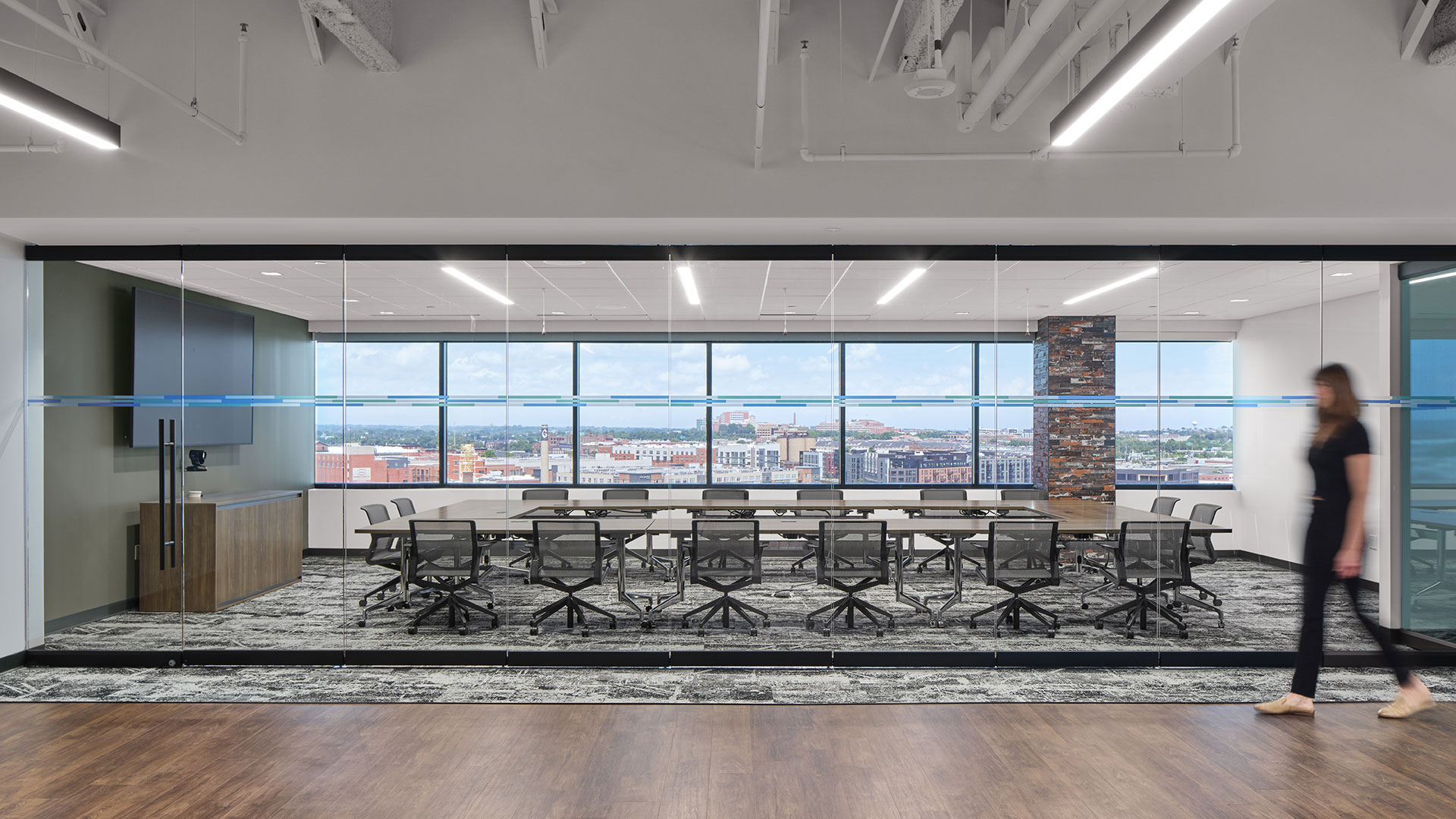McCormick Taylor
McCormick Taylor’s Baltimore office was designed to align with the firm's Philadelphia headquarters while integrating local cultural and operational needs. The primary goal was to create a collaborative, multifunctional hub that would foster community and connection while reflecting McCormick Taylor’s environmental brand standards. The design achieved this balance by reducing the overall footprint, reallocating underutilized space, and maintaining a focus on efficiency, all while providing a workspace that would support the Baltimore team’s identity and workstyles.



Project Goals
The project aimed to design a workspace that was both functional and reflective of the company’s culture. This included aligning the layout, workseats, and design elements with McCormick Taylor’s Philadelphia headquarters while adjusting the design to accommodate the specific preferences of the Baltimore group. The layout needed to facilitate collaboration and social interaction, support hybrid workstyles, and reduce the overall square footage. Additionally, there was a focus on reallocating storage space to flexible work areas, creating a welcoming environment that encourages interaction, while also supporting the local office culture.

“Communication and responsiveness to [my] feedback were highlights of the design process.”

Design Approach
The design sought to create a functional and inviting workspace that would encourage both individual productivity and collaborative engagement. By carrying over base materials and colors from the Philadelphia HQ, the design maintained brand continuity while introducing unique elements to reflect the local team’s preferences. For example, a distinctive terracotta orange was incorporated into the design, adding warmth and a sense of local identity. The multifunction hub, located at the heart of the office, was designed to encourage community and provide spaces for relaxation, socialization, and team-building activities.

Branding & Materials
The design palette was kept simple and modern, with white, black, walnut, and warm French gray tones, accented by McCormick Taylor’s signature blue and green, and the unique terracotta orange. These elements balanced professionalism with a welcoming, vibrant energy. The hub area, which replaced the traditional reception desk, is central to the design, offering a variety of work and social spaces. The layout includes a large community island, flexible seating options, and a gaming area, all featuring sleek, modern materials like reclaimed-brick style tiling that nods to the Baltimore team’s history in a historic warehouse building.


“Receiving the budget comparison sheet made it easy to understand what items were driving costs from one budget to the next.”

Design Features & Space Planning
The workspace layout was designed to provide expansive harbor views, with workstations arranged in a bicycle spoke layout along the angled exterior glass. This ensures unobstructed views of the outdoors, contributing to a calm, inspiring environment. The best corners of the office were dedicated to collaborative and agile workspaces, featuring soft seating lounges, small meeting tables, and larger bar-height areas for brainstorming and design reviews. The open ceilings, wood-look flooring, and black-framed glass partitions enhance the clean, modern aesthetic while allowing the natural surroundings to take center stage.
“Formcraft was mindful of the budget while also providing options for nice-to-haves.”

Outcome
The redesigned McCormick Taylor Baltimore office successfully met the client’s goals of fostering a connected and collaborative environment. The multifunction hub became the heart of the space, providing flexible work areas for various team needs, and promoting an engaging atmosphere. The use of local color accents, like the terracotta orange, and the inclusion of playful elements such as the gaming zone, helped make the office feel unique and tailored to the Baltimore team. The reduction in space and streamlined layout ensured that the office remained efficient and cost-effective, while still providing a vibrant, functional workplace that supports both individual work and team interactions.
This project is a prime example of how thoughtful design can both honor a company’s heritage and embrace local culture, creating a workplace that is both cohesive and dynamic.
